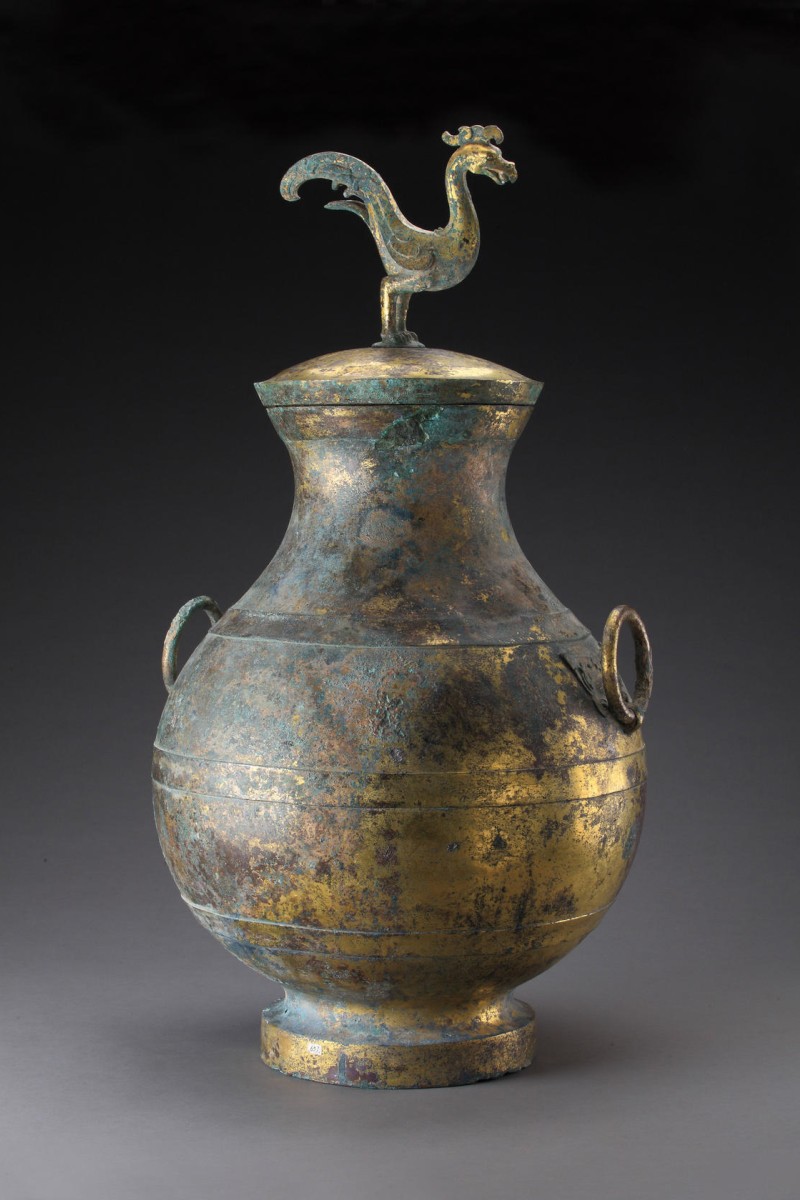 This bronze "zhong" is designed to hold alcohol. Photo: Hong Kong Museum of History
This bronze "zhong" is designed to hold alcohol. Photo: Hong Kong Museum of HistoryStudents often see history as a boring subject. But when given the chance to get up close to the past, you're reminded that ancient people are human beings, not just names in a textbook.
The Rise of the Celestial Empire: Consolidation and Cultural Exchange during the Han Dynasty offers a powerful insight into human history with a collection of exhibits dating back more than 2,000 years to the period between 206BC and 220AD.
Rebecca Cheung Nga-yan, assistant curator at the Hong Kong Museum of History, gave Young Post a guided tour.
Before entering the main exhibition, visitors can get crafty by rubbing a pattern from a tile onto a piece of paper and challenging themselves with a funeral mask puzzle.
Next, they can have photos taken while wearing Han-era clothing, before checking out a model of Weiyang palace, the seat of the Han government and residence of the Emperor.
Clever use of a projector transforms a block of white styrofoam into a colourful 3D representation of the palace.
Two lion-like statues stand watch at the doors of the entrance, daring visitors to walk by. They're called "bixie" - mythological creatures thought to ward off evil.
While they were once used as imposing tomb guardians, the menacing sculptures are now used as sentries outside the exhibit.
As Cheung explains: "It's important to note there were no lions in Han-era China. It's thought that tales and images of them came from the West along the Silk Road. This is one of the key themes of the exhibit: cultural exchange."
One of the most striking exhibits is a jade suit sewn with gold thread. At 1.74 metres tall and made of 4,248 pieces of jade and 1,576 grams of gold thread, it is an impressive sight.
Though only the size of a fairly small person, the suit - a burial costume for high-ranking people - is proof of the wealth and grandeur of the emperors of old.
Cheung tells the story of the archaeological dig that unearthed the piece, which is one of the finest examples of its kind. "When this suit was found in 1994-1995, the gold thread was missing and only the jade pieces were left. Presumably the gold was stolen by grave robbers who left the jade behind. Gold can be melted down and sold. But jade of such high quality would expose any seller as a thief."
The suit was painstakingly rebuilt and restored by experts before being put on display.
Another interesting item is a large, gilded bronze alcohol flask, or "zhong", which is decorated with a phoenix on the lid. According to Cheung, it was found with a large amount of wine still sealed inside - the liquid had turned an ominous shade of green due to chemical reactions inside the container.
"The opening of the vessel was accompanied with the smell of fine wine, so someone apparently tried drinking it. They probably survived," says Cheung.
The theme of cultural exchange is best demonstrated by three exhibits: a piece of woollen fabric with a centaur pattern knitted using Western techniques; a silver "dou", or food container, made with a combination of Western and eastern styles; and a light blue glass goblet imported from Rome, Italy.
"The dou is of Western origin, but we believe the leg on the bottom was added by Chinese craftsmen. The patterns on top were made using 'repoussé', a Western technique that involves hammering shapes into metal from the reverse side," Cheung says. "It's a demonstration of East meets West." And that's globalisation happening, right there.
